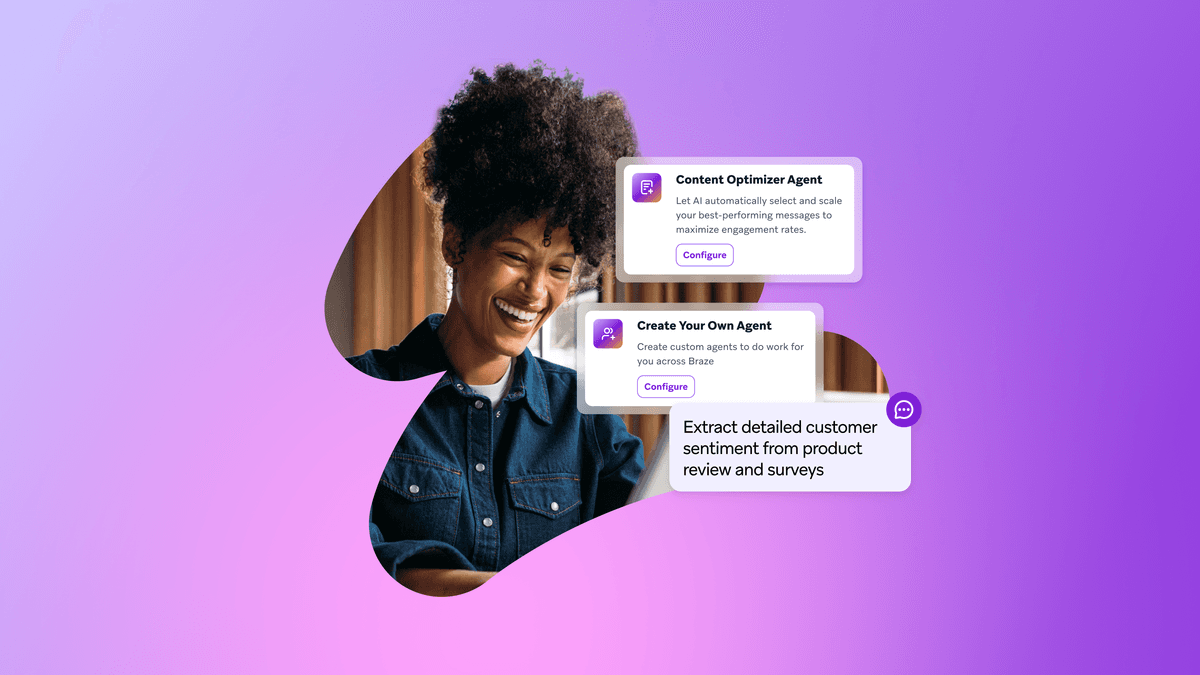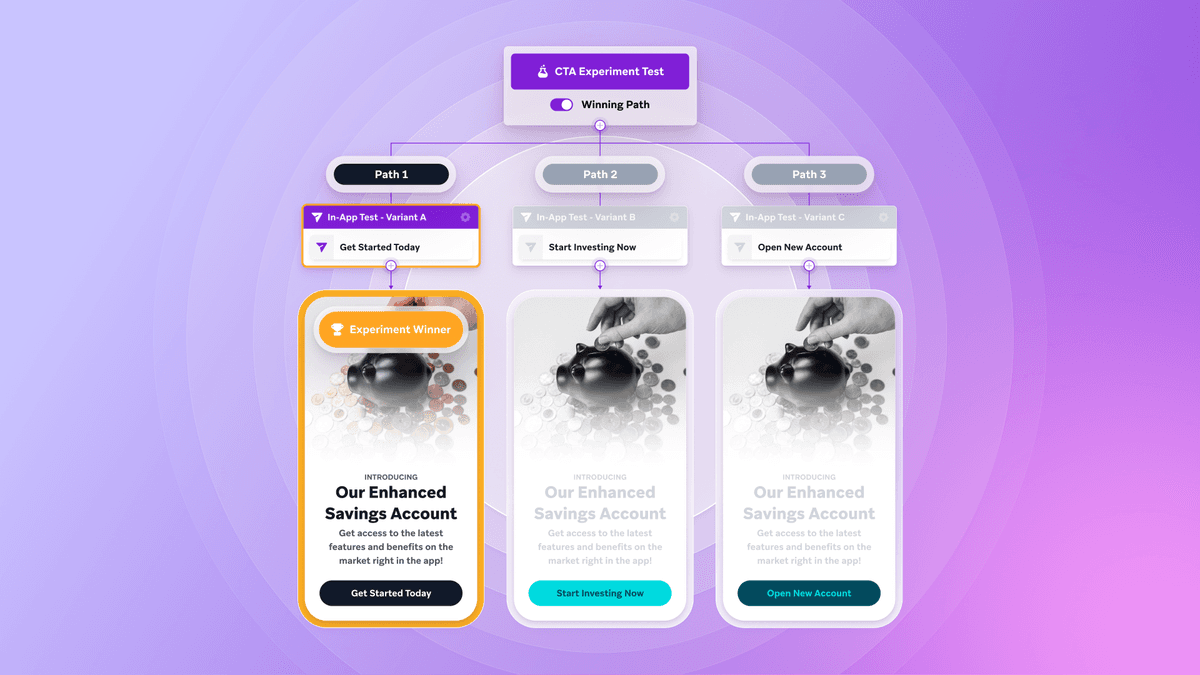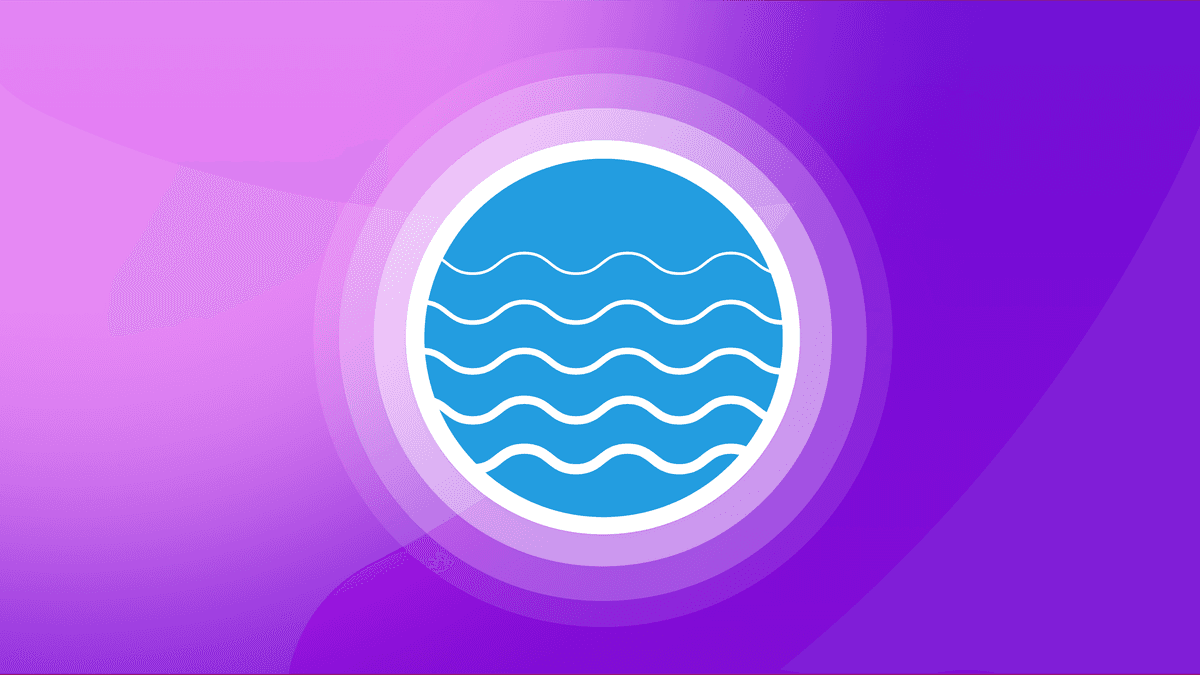How to Create a Winning Holiday Marketing Strategy
Published on July 12, 2024/Last edited on July 12, 2024/20 min read
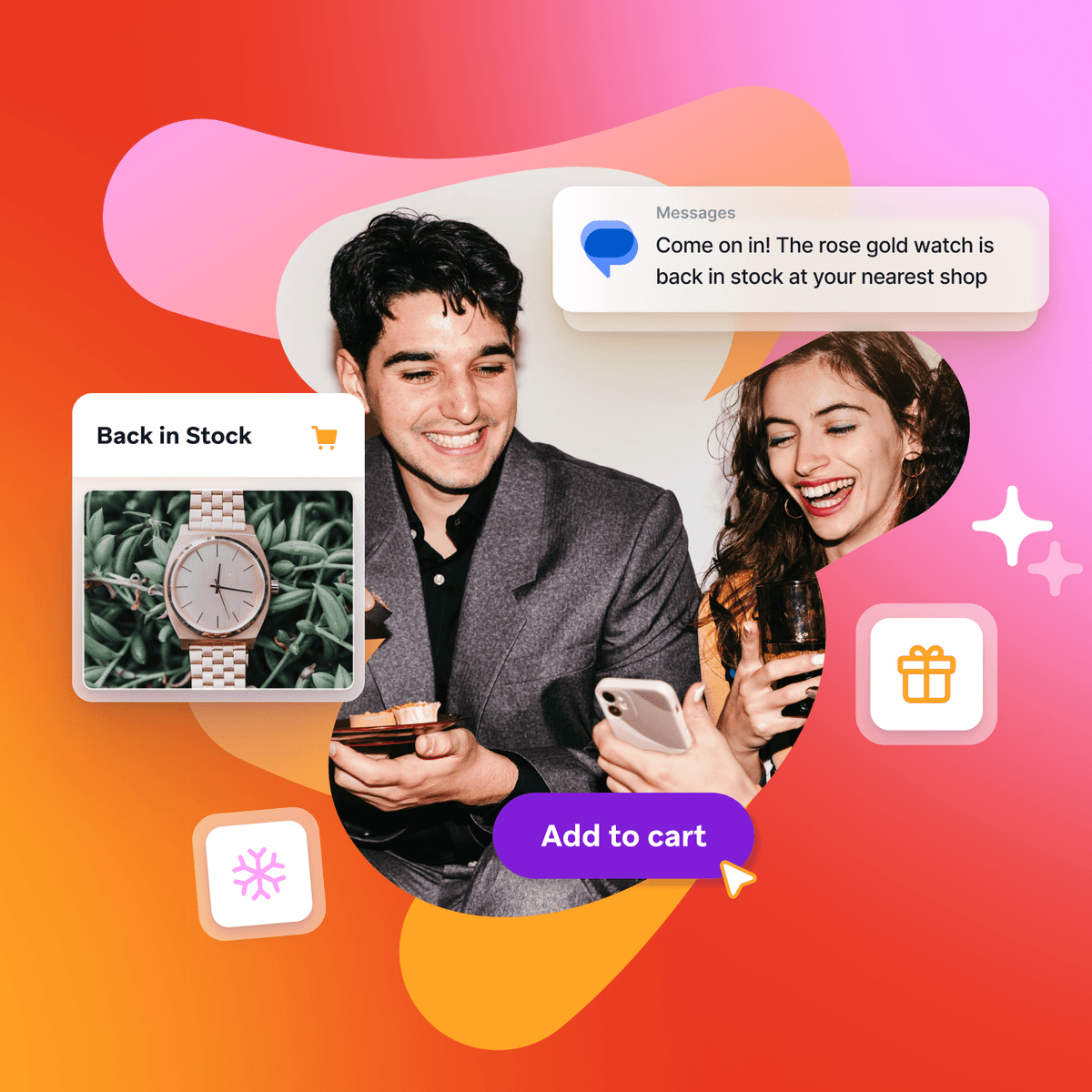
Published on July 12, 2024/Last edited on July 12, 2024/20 min read


At certain times of the year, consumer spending increases, and the world of marketing goes into overdrive. Whether for a seasonal event, festival, or otherwise special day, inboxes get flooded with emails from brands who want to drive sales and increase engagement with holiday marketing campaigns. But many of these messages get deleted or go unread.
With such levels of increased competition, marketers need to think differently if they want to create a winning holiday marketing strategy. One that isn’t just more of what they usually do, but a customer-centric plan that helps stand out from the crowd and build relationships that last all year long.
So where do you begin with such a plan? And how can you make sure you have everything you need to execute it? Read on to find out.
What Is Holiday Marketing?
Holiday marketing is the campaigns and promotions that happen around holidays and festivals. It is also sometimes referred to as seasonal marketing. Christmas and year-end are common examples that are given; however, it can also refer to other key moments such as Valentine’s Day, Easter, Eid el-Fitr, Hanukkah, Mother’s Day, Father’s Day, Halloween, and Thanksgiving, to name a few.
A holiday marketing strategy typically includes campaigns that associate a product, service, or brand with a holiday or festival to encourage people to buy during these times. Sales, discounts, special offers, and promotions are usually given as incentives for spending.
However, as well as increasing spending, a strong campaign also helps place brands firmly in the minds of buyers, building trust, loyalty, and recognition, so that when they think of a certain holiday, they also think of the brand and/or its offerings.
Why Is Having A Holiday Marketing Strategy Important?
Having a holiday marketing strategy is important because without it, you risk missing out on valuable opportunities to increase brand awareness and drive sales. Holidays give brands the chance to reach potential new customers and re-engage old ones. Beyond that, connecting with customers during these celebrations and important times in their lives can help forge deeper relationships and support sustainable growth.
By creating customer-centric campaigns focused on customer engagement, the benefits become wide-reaching and have longevity. It’s more than just claiming a few extra sales to boost revenue. It’s about building long-term relationships with consumers who, if it’s done right, will not only buy from you now but will come back to you in the future and recommend you to others.
Rather than blast customers with promotional emails within a short time period, it’s important to build your strategy to cover before, during, and after the holiday event as the needs and desires of a customer change during the course of this journey.
The buyer journey includes three stages:
In order to stand out in a sea of competition and to make customers feel seen, heard, and valued, your holiday marketing strategy should be personalized with messages that speak to individuals in each of these stages.
How to Build A Holiday Marketing Strategy
Building a holiday marketing strategy is not a one-size-fits-all approach, and brands will need to customize their plans to meet the needs of their audience.
A best-in-class customer journey can look different depending on the business, but typically, you’d want to activate your audience first. It’s important to make sure you have access to the right first-party data so you can create personalized messages that resonate with your audience. Then you might run some pre-holiday campaigns with social ads or early access offers. During the holiday season, as well as promotions and sales, you may want to track abandoned carts and provide customers with the most seamless experience through cross-selling and order tracking. Post-holiday is the time to follow up for feedback, reach out to lapsed customers, and launch new products.

As well as working through these stages, here are five tips to be mindful of when creating your holiday marketing strategy.
Look back at previous campaigns to see what worked and what didn’t. Look at the data you have available and any current challenges that might affect how or when you send messages, such as localization or topical issues.
What does success look like for your campaign and how are you going to measure it? What channels will you be using? What do you want to highlight to your audience? New offers? Products? Do you want to build engagement or trust?
Make sure you have all the necessary people and tools in place to enable your campaign to run as smoothly as possible. Is everything and everyone working well together? Do you need a team or campaign lead? Does everyone know what to do and what’s expected of them? Does the technology you’re using have the capabilities you need it to have?
Test your campaign, learn from the results, and optimize further. Make sure every touchpoint and interaction a customer will have with your brand on their journey is working as it should.
Don’t just end your campaign when the holiday is over. Build in lifecycle marketing so that lessons can be carried forward and customers can be driven towards loyal advocates, increasing customer lifetime value.
10 High-Impact Holiday Marketing Campaign Ideas
So what does it look like to activate, monetize, or retain your audience with a high-impact campaign? So that you don’t have to start from scratch, here are ten ideas from the Braze Holiday Inspiration Guide to spark your imagination.
Drawing web customers to your app during busy holiday periods so that you are able to reach them more effectively.
Use the messaging channels that are available to you to nudge users towards downloading the app by offering an improved service. Leverage personalization to highlight the benefits of using the app that apply directly to the individual.
Stronger engagement and stickiness through app downloads and more seamless experiences for the customer.
The success of your campaign is at risk because of low customer awareness.
Utilize cohesive, cross-channel campaigns to send a series of promotional messages that engage users across different platforms and channels relevant to them.
More conversions and more revenue come from increased awareness of your brand’s promotions.
Driving users to show up at an in-person event or experience that could help to increase revenue and deepen customer relationships.
Using location-targeting and cross-channel communication, create campaigns that reach potential customers where they are. Invitations to physical events make users feel special, especially when combined with personalization using previous activity and behavior with your brand.
Increased brand awareness and new engagement opportunities which can lead to boosted revenue.
Anonymous users. Those who are actively browsing your website but not creating an account. You’ll only ever get limited data from them and they’ll only ever receive a more limited experience, so you really need to encourage them to create an account so you can understand them better and engage with them more effectively.
Using Braze tools like in-app messages and Content Cards you can show users the benefit of creating an account and give them a simple and easy way to do it. Remove as much friction as possible and highlight any important information that will encourage users to share their preferences and interests with you for a more tailored experience.
Window shoppers can be converted to engaged users and ultimately loyal advocates as their engagement with your brand grows and the relationship deepens.
Customers are buying the most basic version of your product. You can use the holiday to help them discover exclusive or premium versions or related and relevant add-ons to help increase order size.
Highlight relevant upgrades and add-ons before a customer checks out by using in-product messages. Show the value of premium and exclusive items with out-of-product messages, such as email or SMS, and use deep links to make purchasing a simple task.
What do we mean by in-product vs out-of-product messages?
Think of in-product messages as those that get deployed within a given experience you own, such as your app or website, while customers are actively browsing these owned digital properties. Out-of-product messages are those you may send to bring users back to your digital experiences, such as email campaigns, push (mobile and web), and text campaigns.
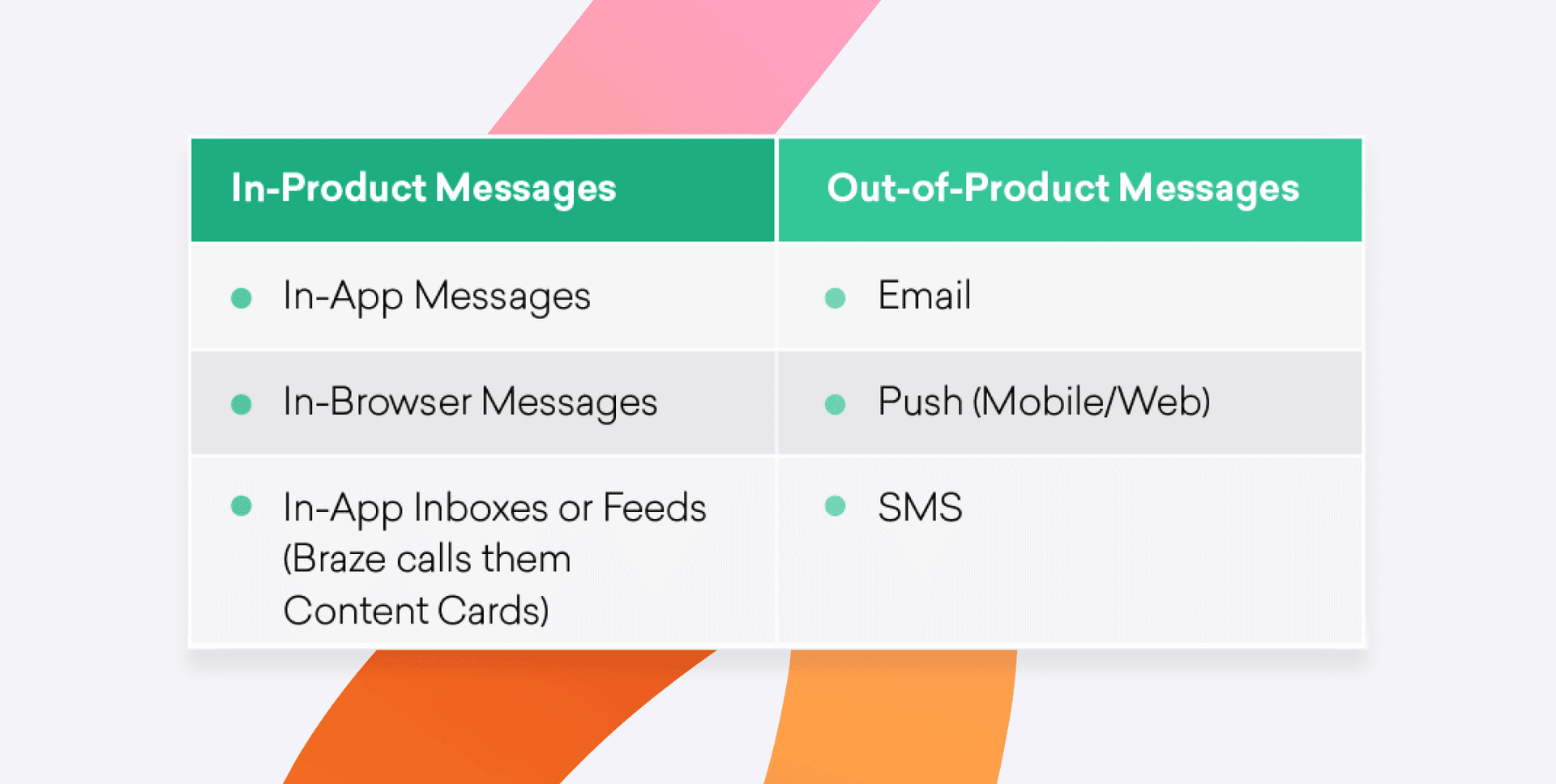
Increase order value and customer lifetime value by driving more expensive purchases.
Your customer service team can be overwhelmed with requests for tracking and delivery details if customers can’t easily access that information.
Make order updates automatic, so that when an order is confirmed, packed, shipped, and delivered, customers are notified in real time with messages through their channel of choice. For example, email or SMS.
This builds trust with your customers and eases the pressure on your internal teams during busy times. It also gives users a reason to engage with you beyond their purchase.
The cost of paid ads increases during holidays so you need to find ways to target the right audience and improve the ROI.
Using customer profile data you can target paid ads to users based on their browsing or buying behavior so that you’re only paying for ads that are served to those more likely to convert.
Your ad spend becomes more targeted and so more effective and efficient.
Conversions are taking a dive and you need sales to increase quickly so that you can reach your business goals.
Short-term discounts, sales, and special offers bring a sense of urgency and can be sent to users that have been segmented based on their channel preferences. This ensures that they receive the messages on the channels they use most and are more likely to engage with.
Creating urgency helps to drive fast purchases.
After the holidays, a lull can follow as the buzz of the period falls away. How do you keep your audience engaged and excited for whatever’s next?
Leverage cross-channel messaging and behavioral data to highlight new products, features, and services, alongside their value. Messages can also be triggered when a user browses a particular page or product that suggests your new offering might be a good match for them.
The more features or services a customer uses from you, the more difficult it will be for them to leave your brand and replace that engagement and usefulness elsewhere.
After the hustle and bustle of the holiday period, some users stop engaging as frequently and they are more at risk of dropping to a lapsed user.
Create segments of lapsed users based on their engagement data and then reach out to them through social or owned channels. Use customized content with data about previous activity and purchases to place value on past use. This will support deeper and more frequent engagement.
For those customers who are floating away, this provides them with solid reasons to return. You’ll be able to deepen your relationship with them, retain users more effectively, and see improved revenue over time.
4 Real-Life Examples of Holiday Marketing in Action
When all the planning is complete and the campaigns are created using the right marketing tech stack, the results can be incredible. Just like these 4 real-life examples below.
Freeletics was founded in 2013 and delivers highly personalized workouts and nutrition plans to an audience of over 51 million. They collect information from users at sign-up, about their background and health goals. Then algorithmic logic is used to cross-reference its database and produce workouts and lifestyle guidance tailored to the individual.
Despite becoming the #1 fitness app in Europe, Freeletics knew that they would have difficulty making an impression in a crowded market during Black Friday.
They decided to look at their cross-channel messaging and worked with Braze on both personalization and testing. They could segment the app’s audience in a number of ways, including whether a user was on the free or premium subscription, activity frequency and persistence indicators. By leveraging a combination of in-app messaging, email and push notification, Freeletics was able to create a set of messaging flows that were dependent on user behavior and engagement patterns. The messages were customized so that each user received very tailored content that was incredibly relevant to their place in their journey with the app.
Once the campaigns were out there, engagement was tracked and A/B testing harnessed to see what was working best. Data was analyzed and messaging was tweaked to create the most optimized versions. This meant that when Black Friday came around, they had the knowledge and understanding of what kind of content produced the greatest response and the highest conversion rate.
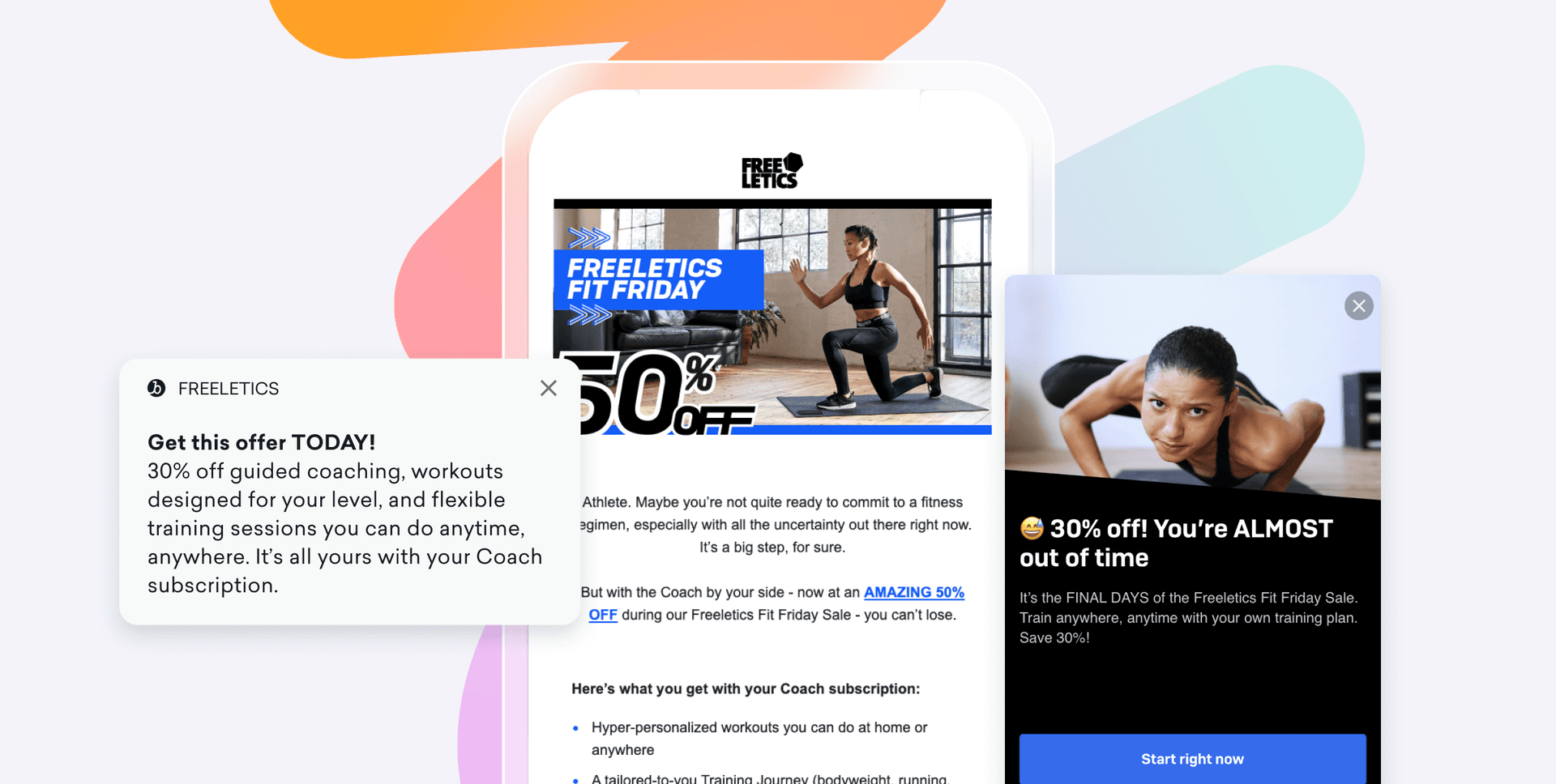
Freeletics saw an uplift of 5% in email deliverability, which was unexpected given the competitiveness of Black Friday. There was also an astonishing 200% increase in conversion rate from free to paid subscribers year over year.
When you need to order flowers, it’s now Bloom & Wild that comes to mind for many. They began life in 2013 and with their letterbox deliveries, have grown massively, becoming the UK’s leading eCommerce flower delivery service.
Mother’s Day is set to bring in a projected £1.7 bn in the UK in 2024. That’s a slight increase on last year, with flowers always a popular gift choice. But for many, this day is painful, and being messaged repeatedly about it rubs salt in the wound. Bloom & Wild heard these concerns and took action.
Two of Bloom & Wild’s core values are “Care” and “Customer First”. With Mother’s Day approaching, they wanted to show these values to be true.
With the help of Braze, Bloom & Wild offered customers the option to opt out of any Mother’s Day communications. Every customer was emailed a link to a simple opt-out landing page. Customers who did opt out were added to a segment so that they could be excluded from the upcoming campaign, and wouldn't receive Mother’s Day messaging that they might find distressing.
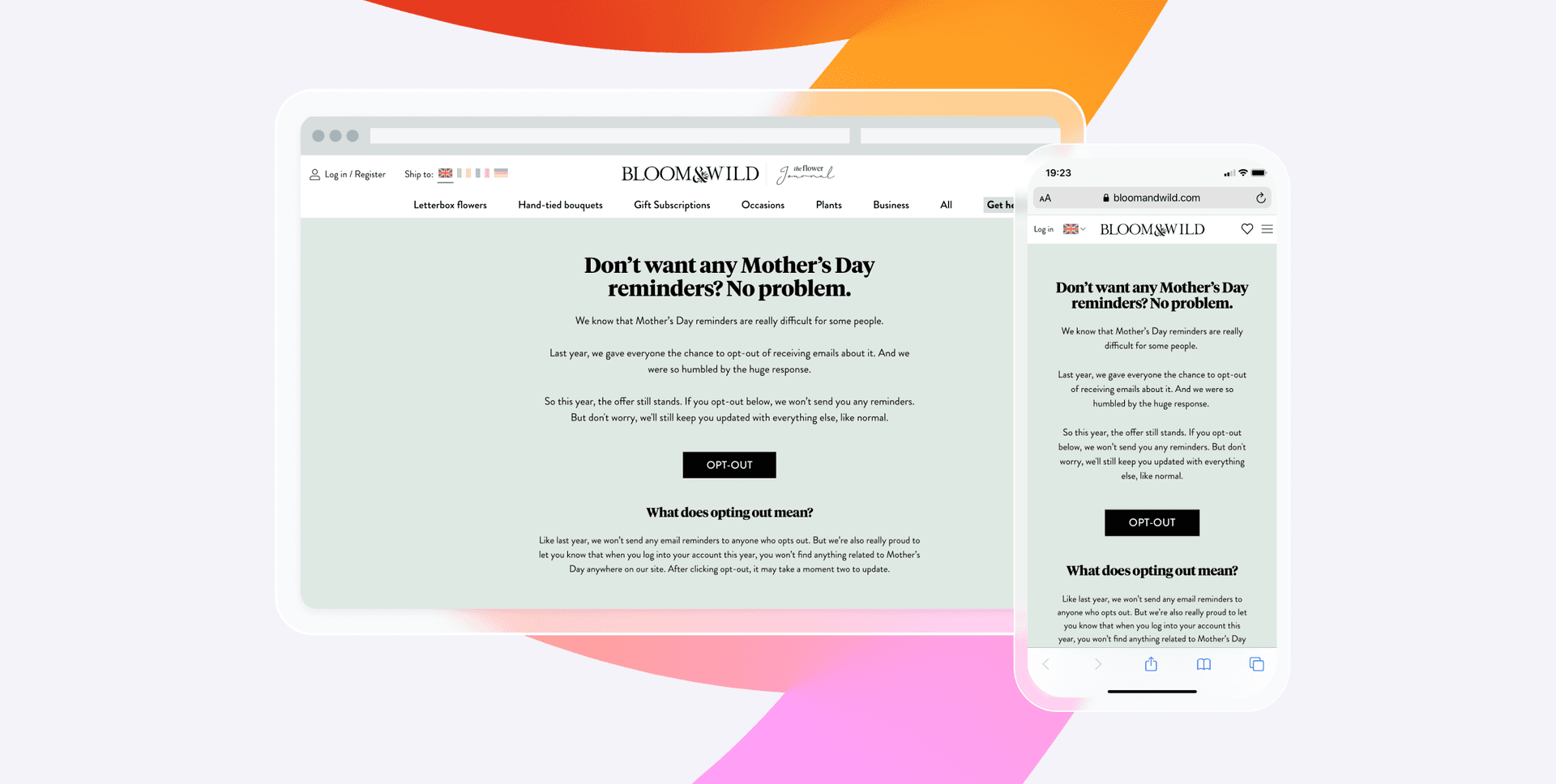
Nearly 18,000 customers opted out of Mother’s Day messaging and they were thankful for being given the choice. They voiced their opinions online and Bloom & Wild saw total Twitter contact volume rise from the usual 4-5% to 20% and feedback increase 5X the average.
The first of its kind, this opt-out campaign has since spawned many copycats and in 2020 Bloom & Wild continued its streak as a UK leader by starting the Thoughtful Marketing Movement to encourage others to join them in putting customers at the heart of campaigns.
When you need to read a book but don’t have the time, many people turn to audiobooks so that they can listen on the go. But even that requires more time than many people have. That’s where Blinkist comes in. They summarize non-fiction books into bitesize chunks, sharing key takeaways in as little as 15 minutes.
Seeking deeper relationships with their customers and stronger engagement on their mobile app, Blinkist wanted to highlight the merits of being part of their community. They had targets that included wanting to use a high level of personalization, to show the value of Blinkist to those who weren’t very engaged and to include all members, not just premium ones.
Creating this type of campaign, however, and casting such a wide net to appeal to lots of people can be difficult. Especially when you don’t have much first-party data from those low-engaged customers.
Using the segmentation and personalization tools from Braze, Blinkist made segments based on subscription and activity levels. The more engaged users received campaign emails with their own stats and activity, while less engaged users received emails with fewer behavioral metrics but still personalized with personal information as well as titles, images, and motivational messages encouraging them to re-engage. This was down to liquid personalization from Braze, which allows you to automatically pull a user’s unique data into marketing communications.
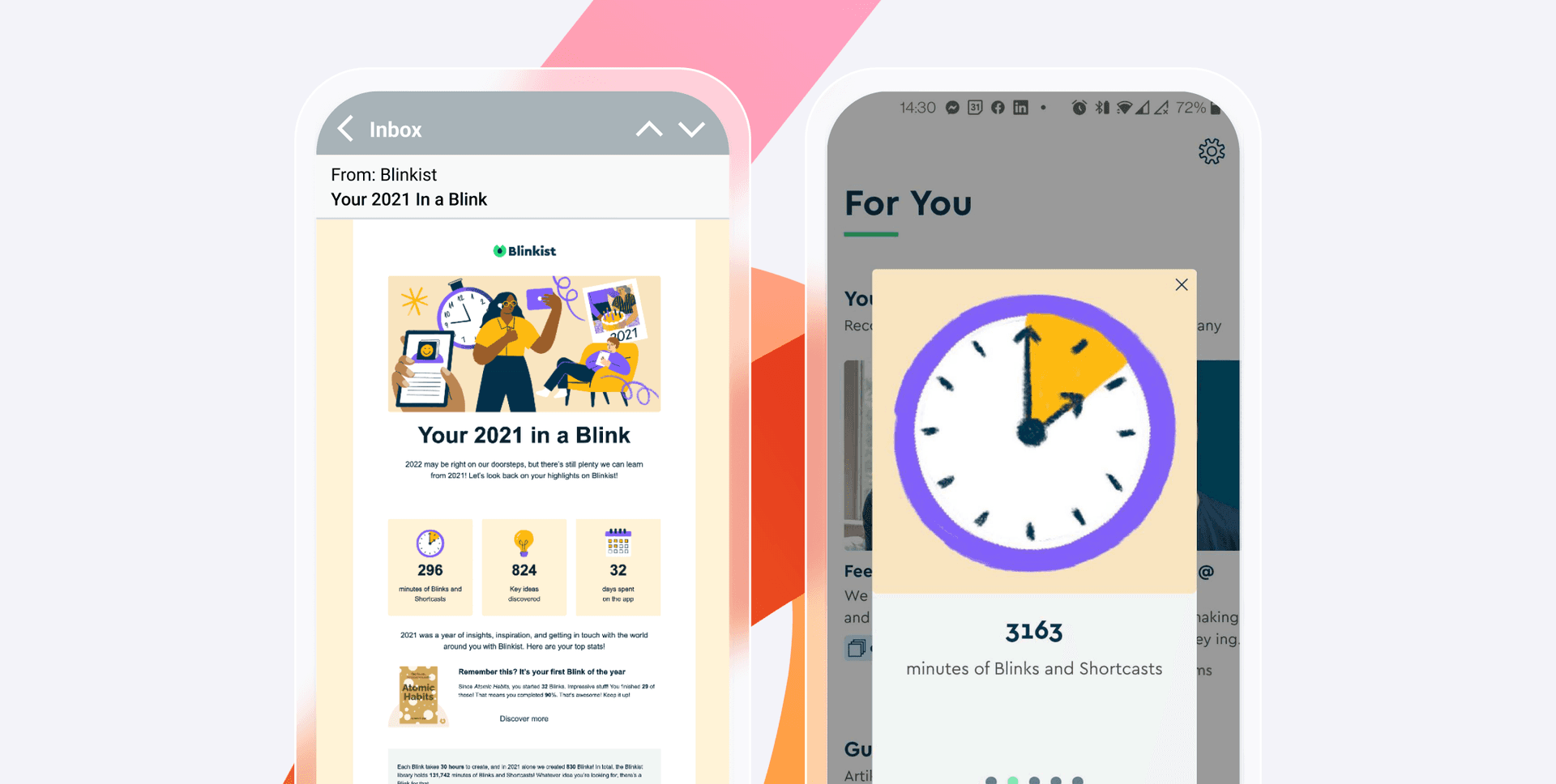
15% more users re-engaged with Blinkist after receiving this campaign and 76% were still engaging a week later.
Cabify is one of the leading multi-mobility apps in the world, offering alternatives to the usual taxi ride. They operate a sustainable business model, so Cabify users can be confident that when they choose to ride with them, they are helping to invest in their city.
Cabify views customer engagement as a vital part of their success, and to support this, they have designed a series of customer journeys to help improve every aspect of the service and every interaction a customer will have with them. Using Braze Canvas for this, they are able to gain a complete picture of what a customer needs.
With so much first-party data available to them, the team decided to create a year-in-review campaign to help increase engagement and encourage users to update the latest version of the app for the best Cabify experience.
The strategy they took was to produce two separate campaigns, one for each goal. The year-in-review was gated behind a message that it could only be viewed in the updated app. For those who had already updated the app, the campaign was triggered when they clicked a button inside the app. It allowed users to access the personalized in-app message content whenever they wanted, not just when they opened the app.
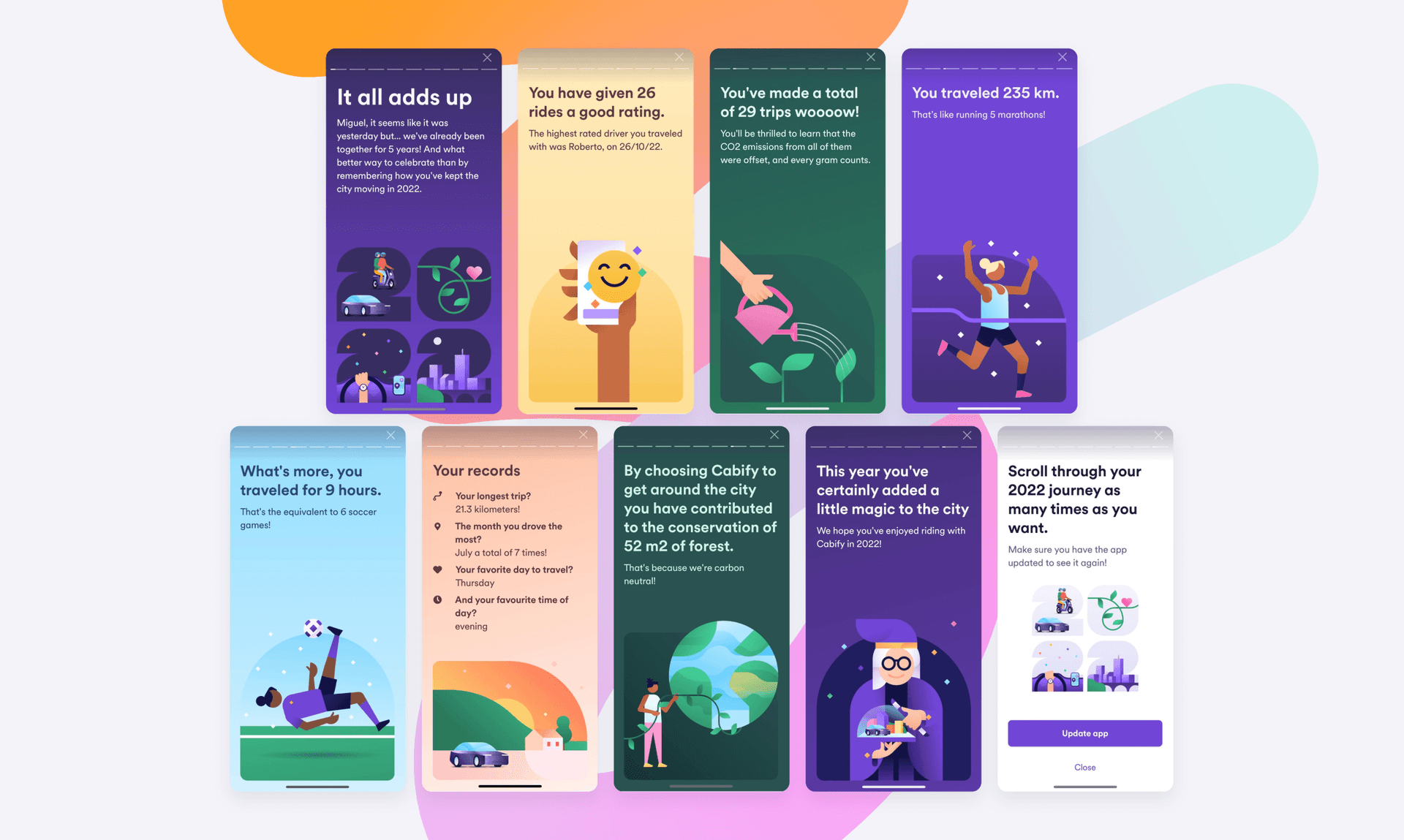
With such flexibility and functionality available through Braze tools and Braze partners, the campaign drove both engagement and app updates effectively.
70% of users watched their bespoke year-in-review more than once. Some even watched up to 15 times. Within two weeks of the campaign’s launch, over 87% of user journeys were made using the updated app. These amazing results came from a customer-centric approach.
How Braze Can Support Your Holiday Marketing Efforts
Braze is built to power contextually relevant, real-time interactions between consumers and brands they love. Our ability to stay ahead of those demands is thanks to extensive processes that allow us to predict, plan for, and meet our customers’ holiday engagement needs.
During last Black Friday and Cyber Monday (BFCM), we saw a big increase in the use of email, SMS/MMS, Content Cards, web push notifications, as well as fairly new channels like Roku messages—proving that our customers are experimenting more with cross-channel strategies to reach their audience.
Preparing for BFCM and other high-volume holiday seasons is a massive undertaking. We start our planning in September, holding weekly meetings to analyze each database, sending service, data processing system, network bandwidth capacity, and more. This preparation helps us handle the increased message volume seamlessly.
A significant part of our success comes from understanding that holiday marketing isn’t about one day or even a set of days; it’s about having a holistic grasp of the season's ebb and flow to meet customers wherever they are during the holiday season.
Today, customers expect messages that are relevant and tailored to their preferences. With Braze, you can leverage rich user profiles, data integrations, and advanced segmentation to understand your customers deeply. Our platform enables you to deliver the best offers, content, and products through AI-driven recommendations and experimentation, meaning each interaction can be optimized to each individual.
Braze is well-equipped to respond to any issues with strategic staffing plans and expanded escalation paths. Our commitment to understanding customers, delivering personalized experiences, and ensuring smooth operations during key marketing moments makes us a trusted partner. As an organization and a platform, we grow alongside our customers and their strategies, continually improving to make Braze better for everyone.
Final Thoughts
Holiday marketing is too good an opportunity to miss, but many brands simply ramp things up rather than create a separate strategy. With the right support from Braze, brands can gain the tools and knowledge to design a strategy that not only amplifies their message but increases a number of outcomes for both consumers and across the business.
To get started on crafting your holiday marketing strategy, check out the full holiday inspiration guide, with tons of ideas to reach your customers at each phase. From activation, through to monetization and retention, you can connect and build stronger relationships with a personalized approach. In the busiest times of the year, when consumers are bombarded with messages from companies, their attention is limited and a holiday marketing strategy will ensure you are making the best use of all your resources to give a customer-centric experience they’ll love and want to repeat.
Holiday Marketing FAQs
Holidays are the ideal time for brands to increase brand awareness, engage customers and reach new audiences because they are typically times of heightened consumer buying.
It’s best to start planning for holiday marketing campaigns at least 3-4 months ahead of the actual holiday itself, in order to give enough time to create and prepare all the necessary parts of your campaigns.
To prepare for holiday marketing, it is best to have a strategic marketing plan and campaigns that have goals and objectives. Make sure you have all the necessary tools to be able to create campaigns, collate and analyze data, and be able to take action on your findings.
Depending on where you live in the world, some holidays are better than others for marketing opportunities. In general, end-of-year holidays such as Black Friday, Christmas, and New Year are usually the most popular, followed by Halloween and Valentine’s Day.
There’s no one-size-fits-all approach for holiday marketing, but your strategy can include things like discounts, gift recommendations, tapping into nostalgia, harnessing mobile, free shipping, and utilizing video.
Featured Holiday Marketing Resources
Sign up for regular updates from Braze.
